New York-based artist Ji Woo Kim’s work explores themes of identity in the context of race and ethnicity while questioning the concept of home in relation to her own background as a first-generation immigrant. Through her works she examines resulting factors such as cultural identification and social dynamics, as well as their effects on one’s growth from childhood through adulthood.
Recently, I had the chance to interview Ji Woo Kim to discuss her latest projects and the concepts & inspirations behind her artworks.
Rom Levy: What about art captivated you first, and what led you to become an artist?
Ji Woo Kim: I think art was just naturally part of my childhood, as I was exposed to the joys of making art at such a young age. I have very vivid memories of spending hours with my uncle, who is an architect, sitting on the floor of my room and drawing together. We would often create narratives for the figures or scenes that we were drawing, using the drawings as a tool for storytelling. I don’t know if I ever woke up one day and decided to make a conscious decision on becoming an artist. It seems like it was more of a natural outcome in the normal course of things.
When did you start practicing art? Do you make any other form of art other than paintings?
I started getting into artmaking seriously in high school, which is when I decided that I wanted to go to art school for my college education. This is when I started taking lessons in drawing and painting, which became the basis of my technical skills that I am now applying in my practice. During my undergraduate studies, I explored different mediums, such as sculpture, printmaking, and drawing, but I’ve always enjoyed painting the most. With the current type of work I’m making, painting is the medium that I best see fit, so I’m focusing on just paintings at the moment.
What does painting as a medium deliver that other mediums fail to achieve?
I can only speak to what painting does for me and the work that I’m currently working on, as different mediums serve different purposes, but I think painting is a highly expressive medium. The subtleties of the paint are so beautiful to me, such as the way a brushstroke can convey so much through the type of brush you use, the way the bristles of the brush touch upon the surface, the thickness or thinness of the paint, the amount of pressure used when applying the paint, the way pigments of color mix together – it all works together to create a very distinctly different way of painting for everyone. It would be incredibly hard to create a painting that looks exactly the same or was created in the exact same way that someone else did, because there are so many variables. In this way, it’s a very personal way of making art, which is why I think it works well with the type of personal narrative I’m unfolding in my work.
What is the concept behind your work?
My work speaks to my own experience of growing up and living as a minority in a culture and environment that I am not native to. Having spent my formative years in an awkward stage of assimilation and later realizing that I do not/cannot fully belong to either of my cultures, I’ve become interested in creating work that depicts personal fragments of my life belonging to the 2 different physical and cultural environments I grew up in – Canada and South Korea. Creating this type of work has allowed me to investigate my identity further and also examine what determines a place as “home” for people with multicultural identities.
The images make the spectator reminisce about childhood memories. Do you reference images from your youth, or are they found pictures of other’s family photos?
The source imagery I work with are photos from my own childhood that my family members took. Recently, I’ve shifted focus onto photos that depict scenes from my mother’s college years in South Korea, as I’m interested in comparing my life to hers and observing the differences in terms of her having lived the majority of her life in an environment that she was native to, while I grew up as a minority.
What do you aim to deliver to the viewer?
For people with similar experiences and identities, I hope to draw out a feeling of being seen, heard, and understood. For people who have been lucky enough to live most if not all of their lives as part of the majority, I hope my work will be a chance for them to at least think about seeing, hearing, and understanding. Ultimately, I want to facilitate dialogue on the topics of Asian American identity and immigrant life.
How do you think people relate to your paintings?
I’ve been incredibly touched by the way my work has been received by not only Asian-Americans, but with immigrants in general. I’ve had people reach out to me and tell me that seeing my work has been a sort of healing process for them, or that they are grateful that I’m making this type of work. It makes me happier than what words can describe when I’m met with this type of feedback, as I could have never imagined that so many people with different upbringings could relate and connect to the work on such a deep level. At the same time, it is very saddening to hear that the same amount of people have had experiences where they were marginalized. “Lunchtime Heaven and Hell” is a painting that has drawn out numerous conversations with people over a collective experience of being made fun of for being part of a different culture in a Western society. I think the most rewarding part of making the type of work that I make is that I get to hear all the personal stories people share about their own private experiences of growing up and living as an immigrant.
How does the fact that you are a first-generation immigrate in the US affect your work?
I’ve mentioned in a previous interview with my friends at The Here and There Collective that being a first-generation immigrant (technically 1.5 generation) is perhaps the largest part of my identity, and that it has absolutely everything to do with everything for me. I would not be making the type of work that I make if it wasn’t for my experience of immigrating to North America at such a young age, spending my formative years and adolescence in a constant state of self-doubt, and being regarded as too Asian by non-Asians, while being labeled as whitewashed by fellow Asians. Even if I wasn’t making work that was directly talking about this issue, I’m sure it would’ve made its way into my work in one way or another, as it’s impossible to separate myself from such an impactful experience.
When do you know a painting is done? Is your aim to duplicate your reference photo or deliver something else that the photos fail to address?
It’s hard to describe in words when and how I know that the painting is done. I think it’s best put that it’s when you’re at a point in the painting where after observing the work from a few feet away, you get an intuitive feeling that this is the right moment to put the brush down – that if you make one more mark on the canvas, it will cross the line from being complete to overworked. It’s difficult though, and I’ve definitely had instances where I wished that I hadn’t done the last step in the painting, and realized that it would have been just as good (maybe even better) if I had left it as is at an earlier stage.
I am interested in the ephemerality of paintings, do you view your own work as precious? If you are unhappy with a work, do you tend to destroy it or would you rather put it in storage for a while and alter them at a later date?
I think I view my work as being precious in the sense that I would obviously be upset if something were to happen to it, like being destroyed or getting lost in transit, but I don’t have any issues with it being altered in my hands through my own decisions. So far, I’ve never left a painting finished that I’m unhappy with, so I’ve never destroyed anything. And I’ve never put a painting away for months to come back to it at a later date either. I’m quite a single-minded person – sometimes to a fault, so if something isn’t working in the painting, I have to fix it right then and there. I’ve had instances in the studio where I struggle with a part of the painting and end up lying on the floor and crying, before getting back up, neatly tying my hair back again, and then repeat the process of wiping away and repainting the same area for 6-7 hours in one sitting. Another time, I wrapped up in the studio feeling ambiguous about a specific cloud in a painting, thinking that I would come back to it the next morning and fix it. As soon as I cleaned up and washed my brushes, took off my apron, turned the lights off, and was ready to leave the studio, I realized I wasn’t going to be able to sleep as long as the cloud was bothering me, so I set up my palette again and repainted it.
Have you ever painted a mural? If not would you be curious to try this medium?
I have not had the opportunity to paint a mural yet. With the nature of my work in terms of its context and what I’m trying to convey, it would be very interesting to try something like a mural, which is in the realm of public art. It would allow for a larger audience and a bigger conversation, but I’m not sure how the work would translate onto a much more expansive surface in terms of the brushstrokes I use in my work. The largest size I’ve worked on to date is a 72×48 inch canvas, so I can imagine that working on a mural would be a big jump in terms of size.
What are you currently working on, and what are your future plans
I’m currently working towards a solo show planned for next May with a Canadian gallery called Blouin-Division in Montreal. This will be my first show in Canada, which is where I grew up and spent most of my life, so it’ll be a very meaningful show for me. The body of work that I’m creating for that show will focus largely on portraying group scenes, which speak to the community that I never had when growing up as a minority.




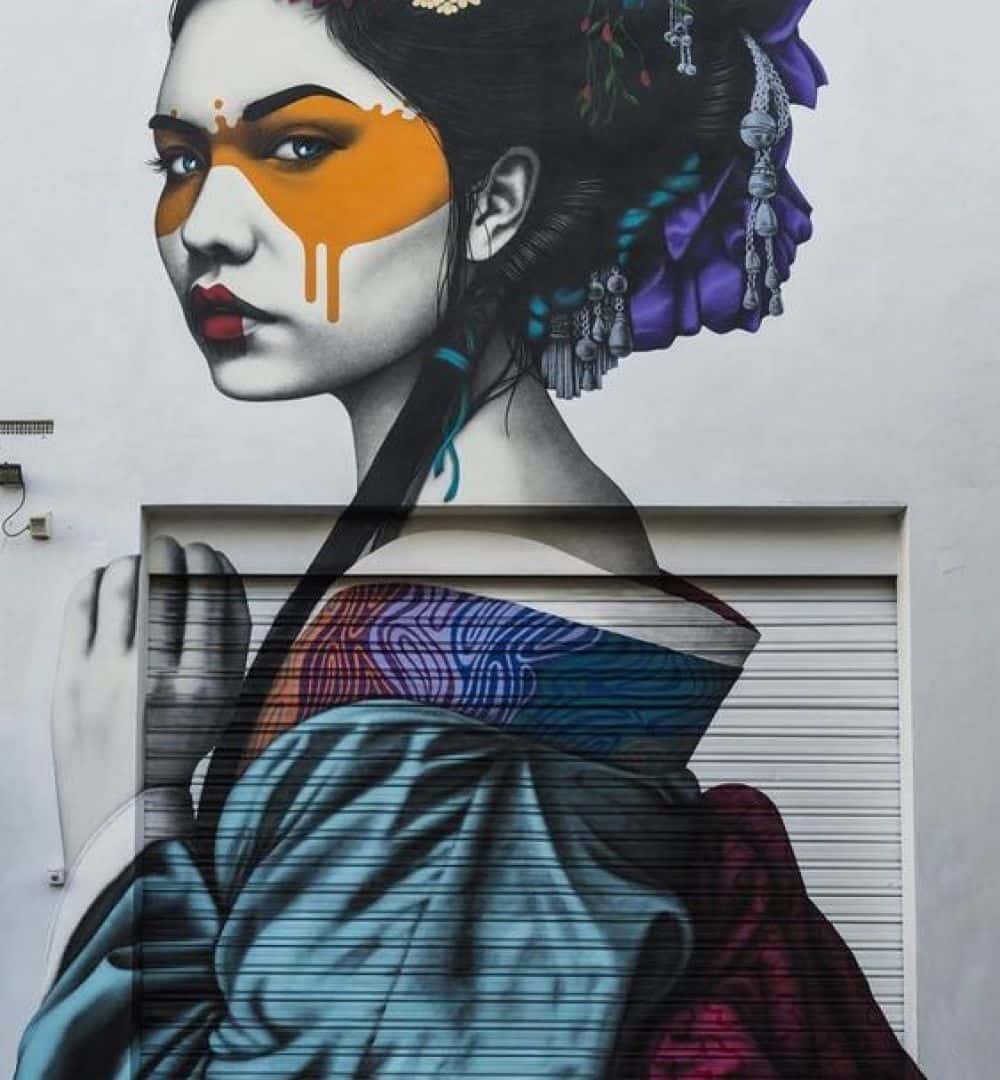














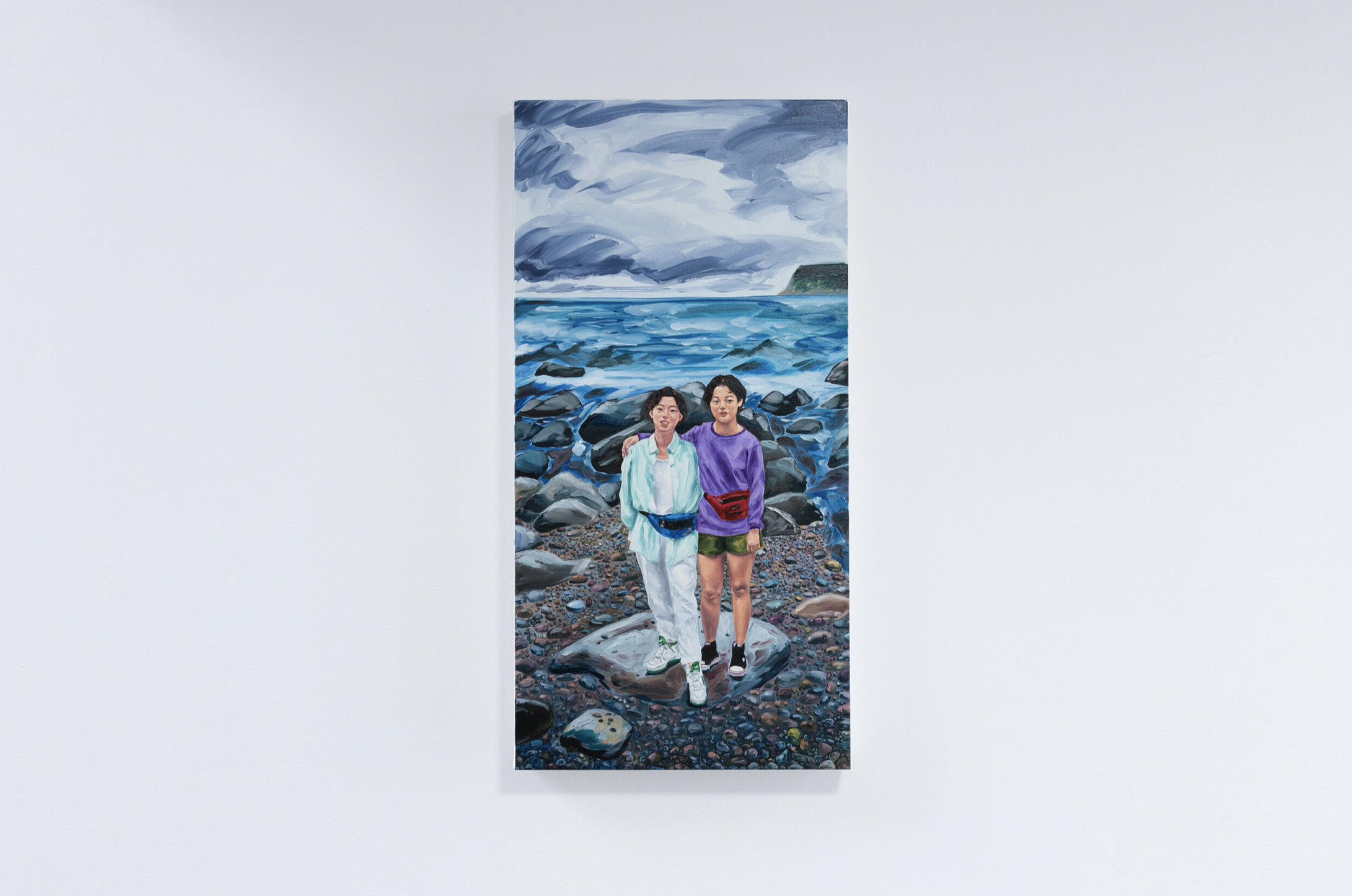













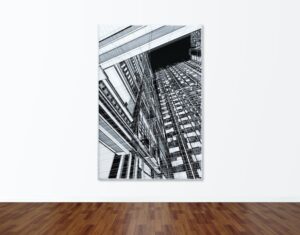




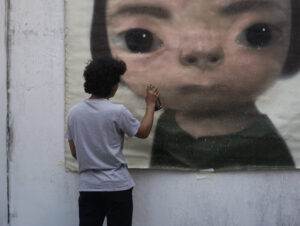

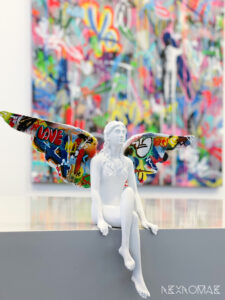
comment